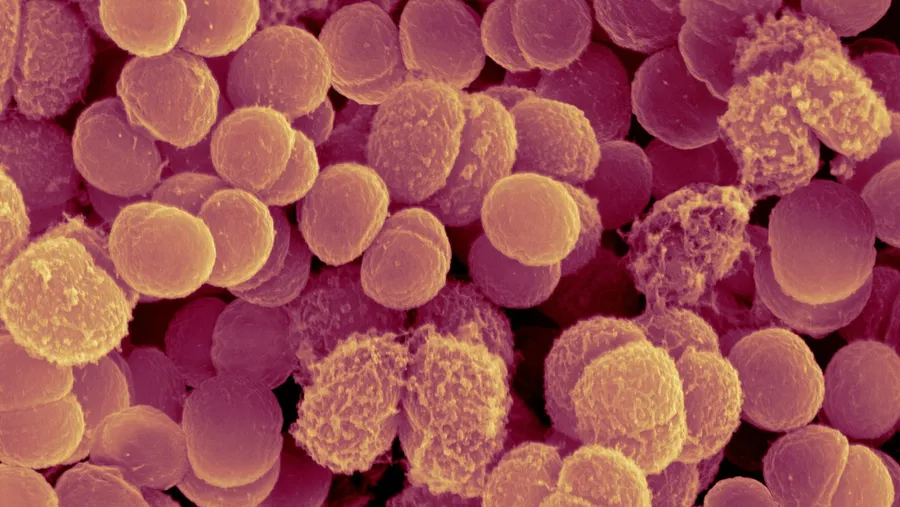!Life on Mars generated the conditions for its extinction

Life on Mars remains one of the big questions scientists seek to answer. Has the red planet known conditions allowing the development of life? A French team sought to answer it using simulations.
The mysteries of life on Mars… French scientists have postulated a hypothetical Martian ecosystem. The team has just published in Nature Astronomy the results of a simulation of the conditions that microorganisms could have encountered. According to them, the appearance of life quickly led to climatic changes that made the red planet uninhabitable.
Life on Mars 4 billion years ago
Today, life on Mars is virtually impossible. In question, a dry and extremely cold environment and an almost non-existent atmosphere composed almost exclusively of carbon dioxide (96%). Due to this atmosphere 150 times less dense than that of Earth, the red planet does not retain the heat of the sun. This explains why its average temperature is -65°C.

However, 4 billion years ago, the red planet did not present this inhospitable aspect. This is the hypothesis defended by French scientists from the Sorbonne and the University of Paris Science. During this very distant time, while life was developing on Earth, similar environmental conditions were settling under the surface of its neighbor. Indeed, many scientists agree that during this period, the atmosphere of the red planet was much denser than today with carbon dioxide and hydrogen. This atmosphere would then have allowed the establishment of a temperate climate. The latter would have allowed liquid water to exist on the planet Mars.
The authors of this research do not claim that life existed on Mars. Nevertheless, if this is the case, the basement of the red planet could have allowed the installation of methanogenic bacteria.
Methanogenic bacteria are strictly anaerobic bacteria. They therefore produce the energy they need to develop by methanogenesis. It is a redox chemical reaction that produces energy and methane. On Earth, methanogenic bacteria live in marine sediments and bogs, in the digestive systems of ruminants, and in extreme places like hot springs.
Un hypothétique scénario d’un écosystème martien

Methanogenic bacteria could have developed 4 billion years ago on Mars. Credits: Flickr/2edeveloperteam
On Earth, we hardly ever encounter hydrogen alone. It almost always binds with oxygen to form water, except at hydrothermal vents . Its abundance 4 billion years ago in the Martian atmosphere with carbon dioxide could provide the metabolites essential to the development of methanogenic bacteria which uses them to produce methane and energy.
4 billion years ago, Mars had average temperatures slightly above the freezing point of water. The planet must have been covered in liquid water. It then formed vast expanses like seas and oceans, but also many rivers.
French researchers have tried to determine how life could have developed at that time on Mars. To achieve this, they set up a scenario using models. They first created a model allowing them to predict the Martian climatic conditions at the time. They thus took into account volcanism, the composition of the atmosphere and atmospheric pressure.
This first model allowed them to create a second model. The latter predicts the physicochemical composition of the Martian crust. With these two models, the research team was able to simulate the surface environment and the underground environment of the planet Mars 4 billion years ago.
A final model enabled them to describe the functioning of possible methanogenic microorganisms. Scientists have postulated that the latter are similar to those that exist on Earth.
A possible microbial life buried under the Martian crust
If microbial life existed on Mars 4 billion years ago, the team of scientists wondered where it could have developed. The planet's atmosphere at that time was therefore rich in carbon dioxide and hydrogen, the molecules essential for the development of methanogenic bacteria . However, even though temperatures were higher than now, it was still too cold on the planet's surface for life to thrive.
The microorganisms therefore had to sink into the Martian crust to evolve, but not too deeply. They needed access to atmospheric carbon dioxide and hydrogen. Thanks to their models, the researchers found that they must have developed up to a hundred meters deep.
The study revealed something surprising. The microbial life that eventually developed in the crust of the planet Mars led to a gradual but inevitable depletion of the hydrogen concentration of the Martian atmosphere. In just a few tens or hundreds of thousands of years, the atmosphere has been completely modified. This has led to a global and widespread cooling of the planet. This Martian climate change ended up making Mars completely uninhabitable. This change caused the microorganisms to descend even deeper, to extinction.
These are just guesses. It is therefore to be hoped that future Mars missions will provide answers to the many questions that scientists have about the existence of life on the Red Planet.
Source : websites

